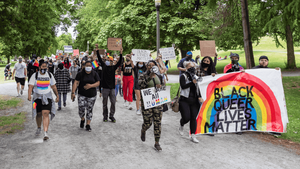Study data
presented at last week's National STD Prevention
Conference in Jacksonville, Fla., show that a rare
strain of chlamydia called Lymphogranuloma
Venereum (LGV) continues to spread in the
United States and other wealthy countries, but new cases
have been limited almost exclusively to sexually
active gay men. There have been about 80 confirmed LGV
cases reported in the United States over the past
three years, but because the sexually transmitted disease is
difficult to diagnose, government health officials
say it's possible there have been hundreds
of undiagnosed cases in the country.
Diagnosing LGV
requires a complex genetic test, which can take days to
produce results. The Centers for Disease Control and
Prevention currently has a test that produces results
in only a few hours, but its use is limited to only
CDC labs. Because diagnosis takes such a long time,
researchers say physicians treating patients with any
symptoms of the STD--particularly gay male
patients--should begin treatment right away
before the test results confirm the infection.
Symptoms of the
STD include cramping, inflammation of the rectum and
anus, genital and rectal ulcers, and bleeding. Left
untreated, LGV can cause permanent genital and rectal
scarring. Severe cases can cause a fatal infection of
the lining of the brain. The STD is treatable with
antibiotics, chiefly doxycycline, but because it is so
virulent, it requires a three-week course of drugs,
much longer than standard chlamydia treatment.
LGV is relatively
common in areas of Asia, Africa, and South America but
rare in developed nations. However, the STD was reported
among gay men in the Netherlands in 2004. Since then,
it has been diagnosed among gay men in several
European countries and Canada as well as in several U.S.
cities. Health officials believe most U.S. cases of the STD
have been linked with unprotected anal sex.
Because the STD
causes open sores and bleeding, health officials say LGV
infection significantly boosts the risks for HIV
infection. (The Advocate)




































































Charlie Kirk DID say stoning gay people was the 'perfect law' — and these other heinous quotes